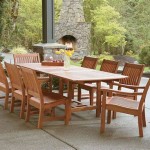Best Paint for Furniture Without Sanding
Reviving old and tired furniture can be a daunting task, particularly when it involves the laborious process of sanding. However, advancements in paint technology have made it possible to revitalize furniture without the need for sanding. These specially formulated paints provide excellent adhesion and durability, ensuring a professional-looking finish even on slick surfaces.
Types of Paint for No-Sand Furniture Refinishing
- Chalk Paint: Made from a mixture of chalk, water, and pigments, chalk paint is renowned for its matte finish and ease of use. It adheres well to most surfaces, including wood, metal, and glass.
- Milk Paint: A traditional paint made from milk proteins and pigments, milk paint creates a unique, distressed look. It is suitable for both indoor and outdoor use.
- Latex Paint with Bonding Primer: While not specifically designed for no-sand painting, latex paint can be used if it is combined with a bonding primer. The primer enhances adhesion and provides a smooth base for the paint.
- Oil-Based Paint with Deglosser: Oil-based paint provides a durable and glossy finish, but it requires more ventilation during application. Deglosser can be used to reduce the sheen and improve adhesion.
Benefits of No-Sand Paint
- Time-Saving: Eliminates the tedious and time-consuming process of sanding.
- Less Mess: No sanding means no dust or debris to clean up.
- Easy Application: Most no-sand paints can be applied with a brush or roller, making it a simple DIY project.
- Durable Finishes: Despite the lack of sanding, no-sand paints provide durable and long-lasting finishes that can withstand daily wear and tear.
How to Choose the Best No-Sand Paint
When selecting a no-sand paint, consider the following factors:
- Surface Type: Ensure the paint is suitable for the type of furniture you are painting (e.g., wood, metal, glass).
- Desired Finish: Choose a paint that provides the desired sheen level, whether matte, satin, or glossy.
- Coverage: Pay attention to the coverage of the paint and calculate the amount needed for your project.
- Drying Time: Consider the drying time of the paint to plan your painting schedule.
- Budget: No-sand paints can vary in price, so set a budget and choose accordingly.
Tips for Using No-Sand Paint
- Proper Surface Preparation: While sanding is not required, it is still important to clean and degrease the surface to remove any dirt or residue.
- Use a Primer: A primer can enhance adhesion and provide a smoother base for the paint.
- Apply Thin Coats: Avoid applying thick coats of paint, as this can lead to peeling or bubbling.
- Allow Adequate Drying Time: Let the paint dry completely between coats to ensure proper adhesion.
- Protect the Finish: Once the paint is dry, consider using a protective finish such as polyurethane or wax to prolong its durability.
Additional Considerations
For intricate or highly detailed furniture, sanding may still be necessary to achieve a seamless finish. Additionally, if the existing finish is chipping or peeling, it is recommended to remove it before applying a no-sand paint.
By choosing the right no-sand paint and following the proper application techniques, it is possible to revitalize furniture without the need for extensive sanding, saving time and effort while achieving a professional-looking finish.

Best Paint For Furniture Without Sanding 3 Minute Makeover

How To Paint Furniture Without Sanding

The Easiest And Best Furniture Paint Without Sanding For A Beautiful Finish

How To Paint Wood Furniture Without Sanding H2obungalow

How To Paint Furniture Without Sanding

How To Paint A Dresser Without Sanding In 4 Easy Steps Sustain My Craft Habit

Painting Furniture Without Sanding Or Priming All In One Paint Day Makeover

Paint Wood Furniture Without Sanding Shabbyfufu Com

Best Paint For Furniture Without Sanding 3 Minute Makeover Youtube

How To Paint Wood Furniture Without Sanding H2obungalow








